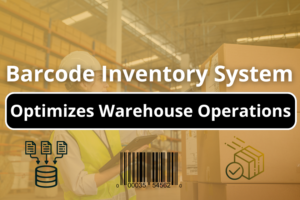In the dynamic realm of supply chain management, the quest for perfection centers around one supply chain KPI metric: On-time delivery, signifying the ability to Deliver On-Time. Delve into this blog to decode the intricacies of this metric, understand its impact, and unravel the strategies to achieve On-time delivery excellence.

Table of Contents
Understanding the KPI: Percent of Orders with On-Time Delivery
DOTIF (Deliver On-Time in Full) or OTIF (On-Time Delivery in Full) is the holy grail of any supply chain organization. This metric ‘Percent of Orders with On-Time Delivery’ stands out as a crucial Key Performance Indicator (KPI) towards the goal of OTIF. This KPI measures the proportion of orders delivered to the customer by the promised date. It’s a direct reflection of a company’s efficiency and reliability, impacting customer satisfaction and business reputation.
Why is On-Time Delivery Essential?
Customer Satisfaction: Delays can lead to dissatisfied customers and lost business.
Brand Reputation: Consistent on-time deliveries enhance brand reliability and trust.
Operational Efficiency: Timely deliveries indicate streamlined processes and effective supply chain management.
5 Steps to Calculate Percent of Orders with On-time Delivery?
Calculating the percentage of orders with on-time delivery is a key performance indicator (KPI) that measures a supply chain’s efficiency and reliability. To calculate this percentage, follow these steps:
Define “On-Time”:
First, clearly define what “on-time” means for your organization. Does it mean the day of the promised delivery date, within a delivery window, or something else? This definition must be consistent across all orders to ensure accuracy in your calculation.
Gather Data:
Collect data on the total number of orders delivered and the number of orders delivered within your defined “on-time” criteria during a specific time (e.g., daily, weekly, monthly).
Count On-Time Orders:
Count the number of orders that were delivered on time according to your definition.
Total Orders:
Count the total number of orders that were supposed to be delivered in the same period.
Calculate the Percentage:
Divide the number of on-time orders by the total number of orders, and then multiply by 100 to get the percentage.
The formula looks like this:
Example:
Let’s say in September, your company had 1,000 orders that needed to be delivered. Out of these, 950 orders were delivered on the date promised to the customers.
Using the formula:
{Percentage of On-Time Delivery} = {950/1000} * 100 = 95
This means that 95% of your orders were delivered on time for the month of September.
Keep in mind that while calculating on-time delivery percentage is straightforward, improving this KPI can be challenging. It may involve enhancing inventory management, optimizing logistics, improving supplier reliability, and refining forecasting methods. It’s also essential to regularly review this metric to monitor performance and identify areas for improvement over time.
How to Achieve On-Time Delivery ?
Achieving a high percentage of on-time deliveries requires a multifaceted approach, combining process optimization, workforce management, and leveraging digital tools such as SAP S/4 HANA EWM, Oracle WMS, and Propel Apps suite of digital supply chain software.
Process Optimization
Streamlined Workflow: Review and streamline order processing, picking, packing, and shipping processes to eliminate bottlenecks.
Predictive Analytics: Use data to predict and prepare for busy periods, ensuring resources are allocated efficiently.
Frequent Cycle Counting: Having real-time and accurate visibility into inventory prevents stock-outs, excessive inventory carrying costs, and less obsolete inventory. With Frequent cycle counting, your inventory will be accurate. Say goodbye to physical counts and stock counts that happen once a year.
Workforce Management
Training: Regular training ensures that staff are proficient in their roles, reducing errors that can lead to delays.
Flexible Staffing: Adjust staffing levels based on order volume, using part-time or temporary workers during peak periods.
Leveraging Digital Tools
Incorporating digital tools is key to enhancing the accuracy and efficiency of the delivery process. Your job is not done just by implementing WMS systems such as SAP S/4 HANA EWM or Oracle Fusion Cloud WMS. You need to automate workflows, enable people to make decisions in real-time, empower material handlers with modern offline based barcode scanning applications for inventory management.
Mobile RF/Barcoding Software (Propel Apps)
Real-Time Tracking: Mobile barcoding allows for real-time tracking of inventory and shipments, ensuring accuracy and timely updates.
Error Reduction: By automating data entry, mobile barcoding reduces human errors, which can cause delays in order processing.
ERP systems (SAP S/4 HANA, IM, WM, EWM, Oracle Fusion Cloud for SCM, Oracle EBS)
Integrated Operations: ERP systems from Oracle, SAP offers a comprehensive suite of applications for managing a company’s operations, including supply chain management, which helps in making informed decisions.
Improved Forecasting: It aids in demand forecasting, inventory management, and order processing, which are crucial for timely deliveries.
Warehouse Efficiency: ERP systems provide tools for optimizing warehouse operations, including advanced picking and packing strategies, which directly affect delivery times.
Enhanced Visibility: It offers transparency in warehouse operations, allowing for better scheduling and resource allocation.
Customer Portal
Many customers are busy. They want to do business with your organization on their terms – when they want and how they want. Your customer may want to track order status in the evenings after going home or check invoices at night. In our anecdotal research, we have found that Customers want to have access to all the information conveniently in Mobile apps and Portals, so they do not spend a lot of time on the phone. This is true especially for Gen Z who does not like to talk to people.
With this trend in mind, Propel Apps has collaborated with some of its customers to launch Customer Portal tool. With Customer Portal, customers can track orders, payments, invoices and place orders with accurate information. They can see product details, pricing details. Creating RMA, Tracking RMA, Credit memos, debit memos, BOL documents, shipping documents all can be accessed without calling customer service.
Conclusion
The ‘Percent of Orders with On-Time Delivery’ is more than just a number; it’s a testament to a company’s commitment to efficiency and customer service. By optimizing processes, managing the workforce effectively, and embracing digital solutions like Propel Apps mobile barcoding software, Oracle EBS, and SAP EWM, businesses can significantly improve their on-time delivery rates. This not only leads to higher customer satisfaction but also positions the company as a reliable and efficient player in the competitive market. Remember, in the world of logistics, every second counts, and on-time delivery is the heartbeat of a successful operation. Get in touch for your end-to-end digital supply chain solutions.




